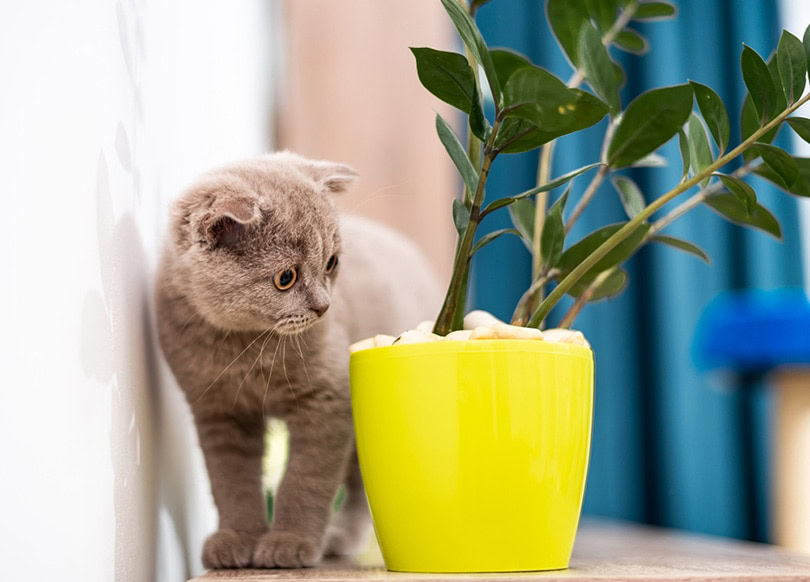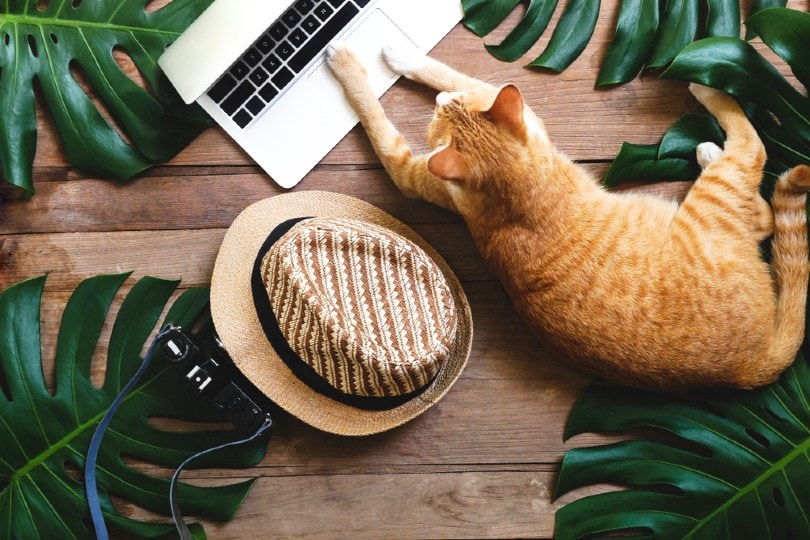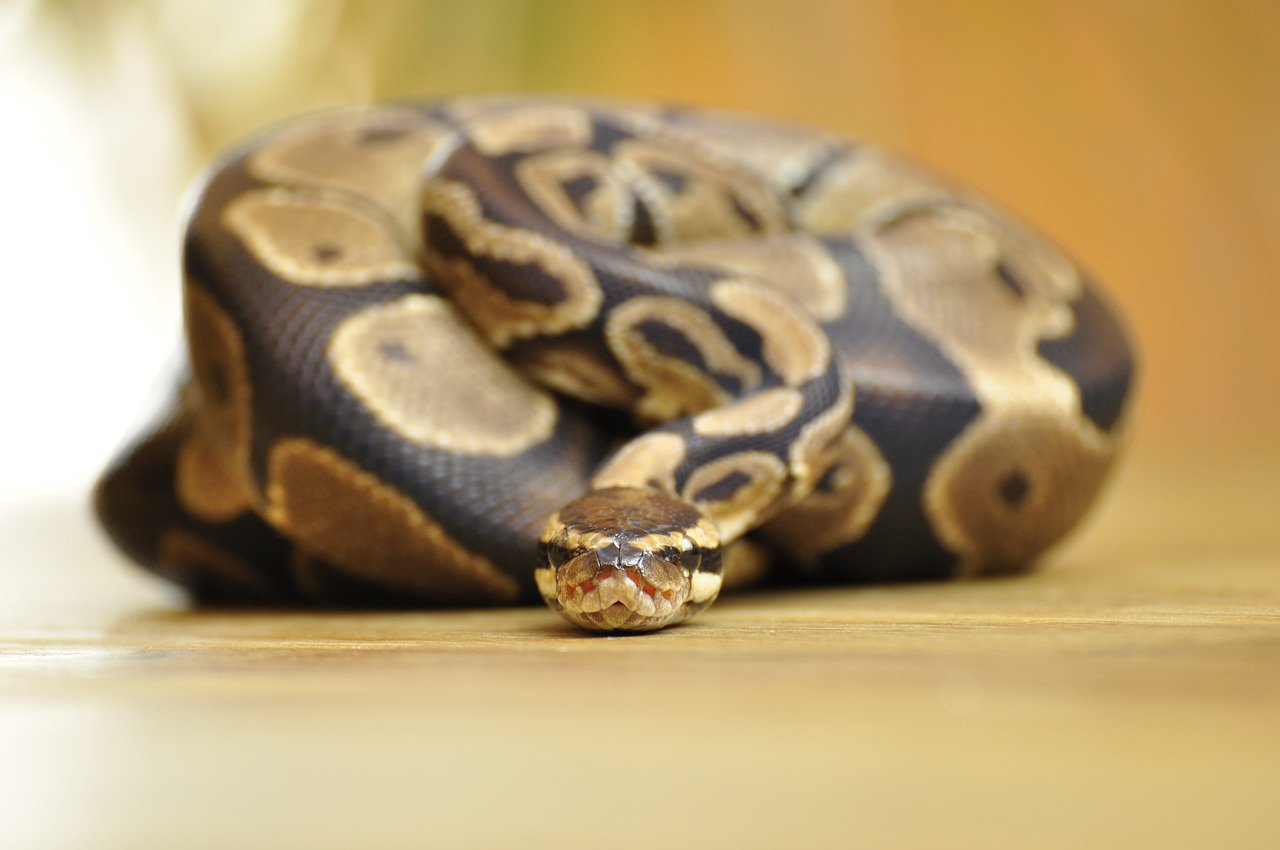VET APPROVED

The information is current and up-to-date in accordance with the latest veterinarian research.
Learn more »Click to Skip Ahead
You just acquired a splendid houseplant, and a few days (or hours) later—oh no! Your pet feline nibbled half the leaves of your precious orchid! Indeed, cats are often attracted to houseplants: They either bite the leaves, scratch the soil, or use them as a litter box.
Besides being concerned about a plant’s potential toxicity for your pet, you want to keep all your indoor plants safe by keeping your cat away from them. Don’t worry! We have six proven solutions to prevent your cat from damaging your houseplants. Let’s dive in!

The 6 Ways to Keep Cats Out of Indoor Plants
1. Mustard or Pepper Repellents

Mustard is an excellent repellent against cats. Dilute a few spoons of it in water and use this mixture on plants where your cat is wreaking havoc. Then, use a spray to sprinkle the repellent all over the place, and repeat the operation every 2 days or so.
Pepper also works well to ward off cats from your beautiful plants. First, use freshly ground black pepper for maximum efficiency or a commercially purchased pepper mill. Then, sprinkle your cat’s favorite plants with pepper.
The only drawback is that the smell of pepper does not last long. Therefore, it is necessary to sprinkle regularly to keep your feline away. You can also dilute 2 tablespoons of crushed fresh pepper in a cup of hot water, let it stand, and mix well before filtering everything. Then, apply the solution with a spray bottle.
2. Lemon and Other Citrus-Based Repellents

Cats do not really appreciate lemons and citrus fruits in general (like oranges or tangerines). While orange and lemon essential oils can be dangerous when misused, it is safe to use a homemade zest repellant. Plus, it smells good!
Bring lemon or orange zest to a boil in a liter of water, infuse for 10 minutes, then filter. Once cooled, spray the resulting mixture around the house. Repeat the operation as often as necessary.
3. Cinnamon
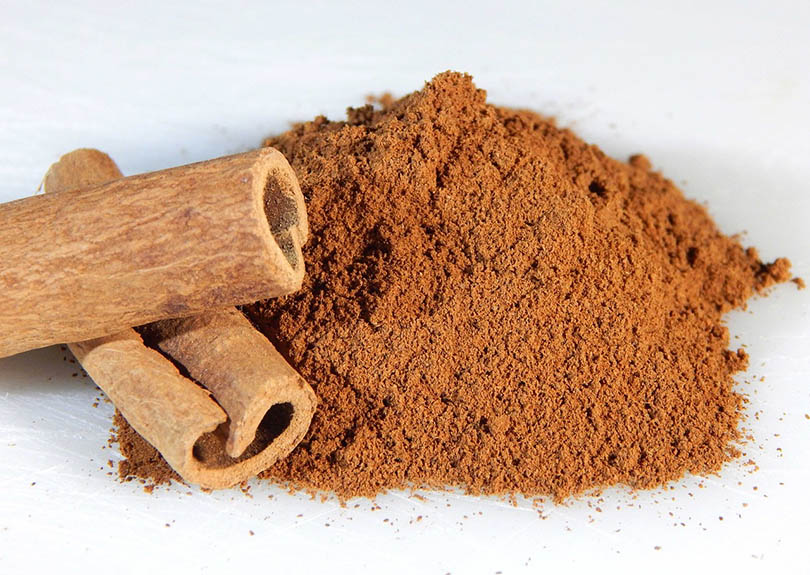
Another tip worth trying is cinnamon since many cats dislike the smell of this bark. You can simply add some cinnamon bark sticks around your house plants, or sprinkle some powder around. Like other natural methods, you will have to be constantly monitoring to ensure the smell is still strong and effective at keeping your cat away from your house plants.
The cinnamon plant is not a toxic plant for cats but never try the essential oil, only the natural bark either in sticks or in powder form. Making a natural spray by boiling a few cinnamon sticks is another safe alternative for your kitty.
4. Coffee Grounds
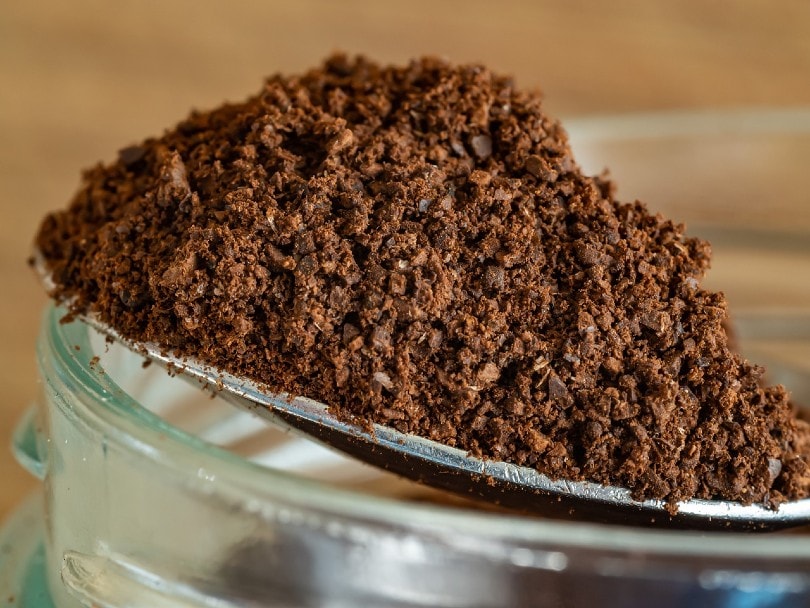
This trick is easy to do. Coffee grounds are also an excellent fertilizer for your plants. Collect the grounds in a container, then place it at the foot of the plant or the flower pot. Repeat regularly to maintain effectiveness, and remove the grounds if they start to mold. Keep in mind that caffeine is toxic to cats, so stick to decaf versions and closely monitor to ensure your cat does not ingest the coffee grounds.
5. Anti-cat Aromatic Herbs
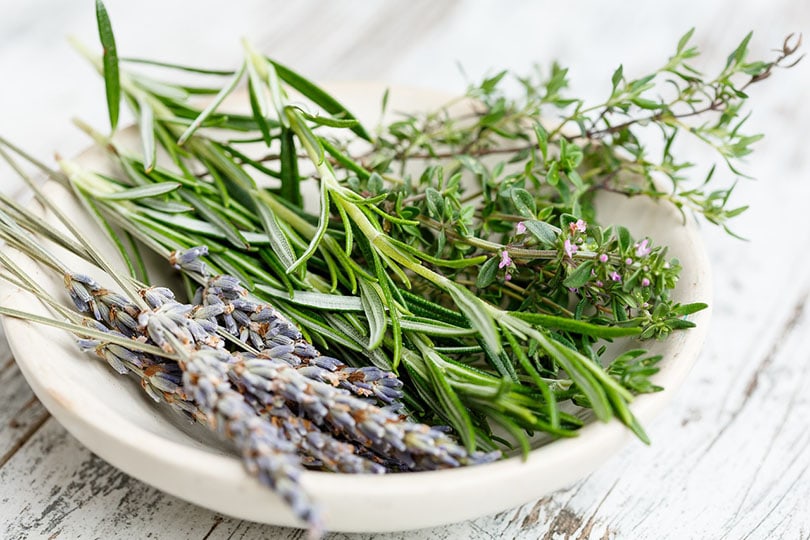
Rosemary, lavender, and lemon thyme are easy-to-grow aromatics and are effective as cat repellants. They can be grown in the garden alongside the plants that you want preserved. Alternatively, you can steep dried rosemary and lavender for several hours in 3 cups of hot water with a bit of cinnamon. Strain the mixture and add a little white vinegar. Shake everything well in a spray bottle. Your homemade repellent is ready to use!
Keep in mind that lavender is considered toxic to cats and while cats naturally tend to avoid getting close to this plant you should keep a close eye on them to ensure they don’t ingest it.
6. Motion Detection Canisters
Perhaps the most reliable of these methods is a motion detection canister. Why? Regardless of whether you are there to see it or not, if your cat gets less than a meter away from your plants they will get sprayed. With a consistency like the one this method can provide, your cat will quickly learn to avoid getting close to your house plants. This method is safe and effective for healthy cats.

Why Does Your Cat Eat Your Houseplants?
Plants Are Said to Be a Natural Aid for Feline Digestion
Cats will naturally eat grass to facilitate their digestion and help them evacuate the hairballs that they swallow daily while grooming themselves. Indoor plants can fulfill the same role, especially for a cat that doesn’t have access to an outdoor garden. Since this behavior is instinctive in felines, you can facilitate their digestion (and save your plants!) by offering them a “green” corner in your house where you grow cat grass.
Indoor Plants Are a Playground for Cats
A cat kept indoors can sometimes get bored; thus, they may see your plants as a terrific playground! This is why their environment must be as rich as possible, with a wide variety of toys, cat trees, perches at window level, etc., available to keep your kitty physically and mentally stimulated.
They Can Serve as Anti-stress for Felines
Like children, cats can react to stress and misbehave. Eating houseplants usually gets your attention, even if it is in a negative way. If your cat is being bullied by another animal in the house or feels left out by you, their emotional state and stress can manifest in destructive habits, like nibbling your beautiful plants!
As another option, if you're looking to give your cat something exciting, we know of an awesome scratcher that both encourages play and doubles as a stylish modern furniture piece. The Hepper Hi-Lo Cat Scratcher is designed with a curved shape for dynamic movement, is built to last with safe and sturdy birch plywood and thick cardboard, and offers three height options to ensure your cat enjoys the exercise, elevation, and excitement they crave ... and, it's affordable!
- Premium Materials - Hepper's cardboard scratcher is made with dense, B-flute cardboard, and a metal...
- High, Low and Lower - A single cat scratch pad won't keep your cat engaged. 3 unique positions keeps...
- Activates Muscles - The Hi Lo isn't just a cat nail file to stop the chief cat couch scratcher. The...
At PangoVet, we've admired Hepper for many years, and decided to take a controlling ownership interest so that we could benefit from the outstanding designs of this cool cat company!
Which Plants Are Toxic to Cats?
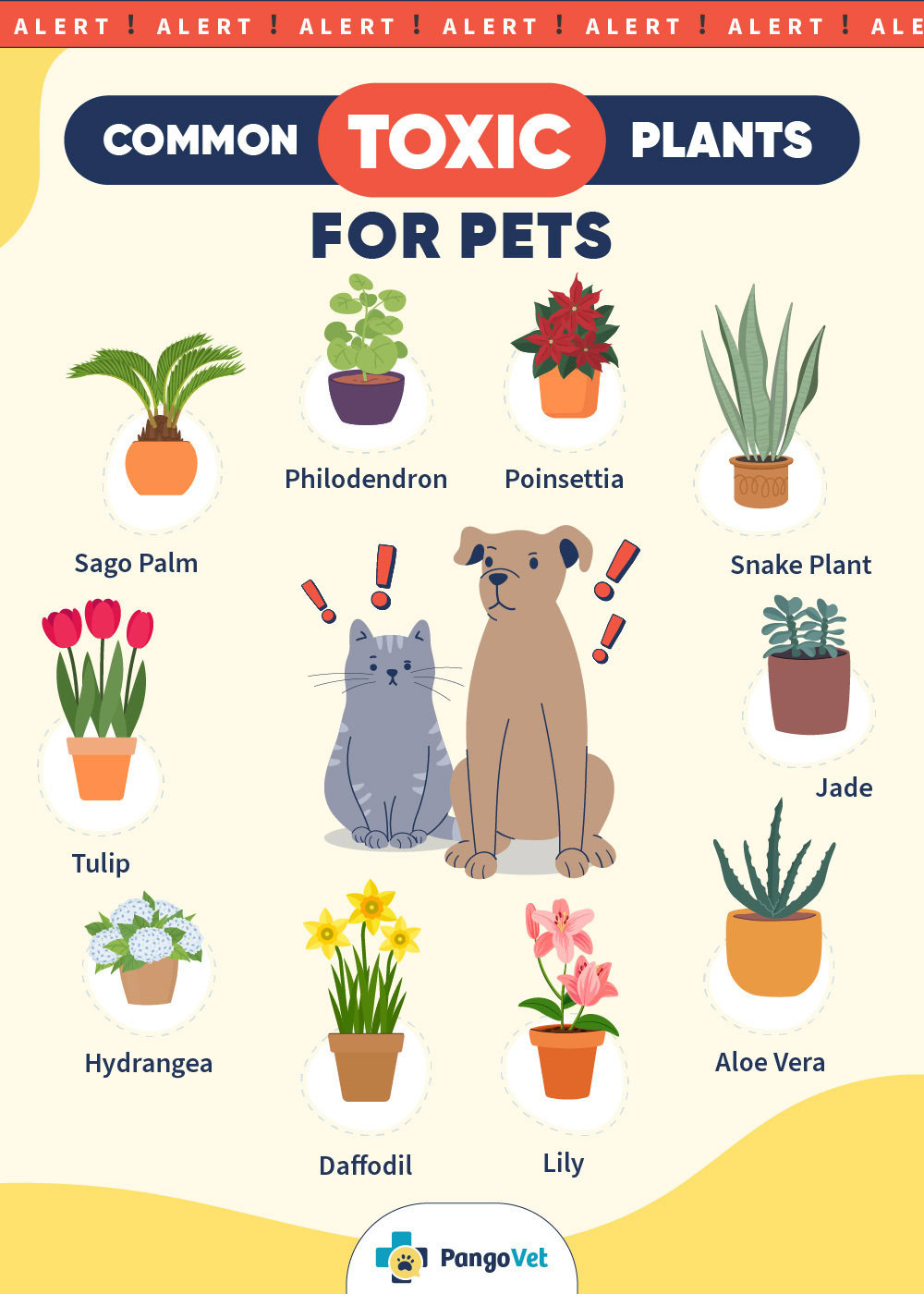
Always make sure your houseplants are not toxic to your cat. The list of poisonous plants for felines is quite long.
- Azaleas and rhododendrons (Rhododendron spp.)
- Peace lily (Spathiphyllum sp.)
- Lily of thevalley (Convallaria majalis)
- Tulip (Tulipa spp.)
- Hyacinth (Hyacintus orientalis)
- Marijuana (Cannabis sativa)
- Chrysanthemum, daisy, mum (Chrysanthemum spp.)
- Sago palm (Cycas revoluta)
- Castor bean (Ricinus communis)
- Oleander (Nerium oleander)
- Autumn crocus (Colchicum autumnale)
If you suspect that your cat has consumed a poisonous plant, contact a veterinarian immediately, and give them the name of the plant that your cat has ingested. If you do not know the name, send them a picture to help them identify it.


Final Thoughts
If there is any irritating behavior of felines, it is the habit of destroying or eating houseplants! However, with a bit of patience, you will eventually find a trick that works to keep them away. We promise that with the right strategy in place, houseplants and cats can live together in (almost) perfect harmony!
- Related Read: Perfect Plants to Keep Cats Away
Featured Image Credit: Stenko Vlad, Shutterstock
